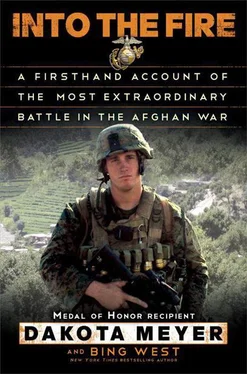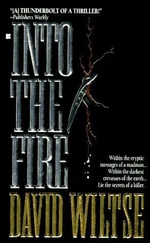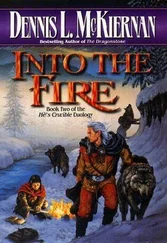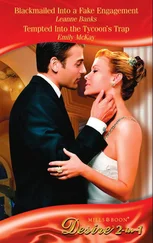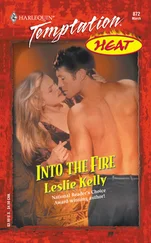The TOC responded to the polar request by asking again for information impossible to provide. Where were all the friendly troops? What was the forward line of trace of friendly units? Was everyone accounted for? Were any civilians endangered?
It was after 6 A.M. The patrol was half an hour into a losing fight. No one had an account of the locations or the casualties among the sixty Askars scattered in the terraces and the wash.
“KE 3365, Hill 1458,” Kaplan told Shadow, the relay team above him. “Tell the TOC that’s critical. I repeat, critical. We have advisors pinned down.”
Shadow 4 on the southern ridge had eyes on an enemy mortar team to the south and called in a polar mission. The TOC denied Shadow’s fire mission. Furious, Sgt. Summers at Shadow 4 pressed back against the TOC.
“The main element is being hit from the north, east, and south,” he said. “All elements are engaged. I repeat, all elements are heavily engaged. We need fire missions now.”
The NCOs inside the TOC were doing their job, and the artillery and mortar crews wanted to oblige. Yet it seemed to Sgt. Summers that every time he relayed a fire mission, the TOC asked him “twenty questions.” A second string was running the show there, and not well.
Despite repeated requests for half an hour, Fabayo had seen no more than four or five effective rounds.
Not every gun remained silent. Somehow the sergeants in the TOC, despite the indecision of their officers, communicated the urgency to the soldiers firing the 120-millimeter mortars outside at Joyce. The mortars responded to KE 3365 with an eight-round “splash”—with shells on target—inside ten minutes.
Those few shells, however, were not nearly enough. At the Joyce TOC, the fire mission requests were cascading in every four minutes. Most were ignored or given a meager response. In firefights, it’s not unusual for two hundred to two thousand artillery shells to be fired. Over the course of the first hour of the battle at Ganjigal, when men lay trapped and dying, the TOC at Joyce allowed only twenty-one artillery shells to be fired.
HIGH COMMAND
Since World War II, forward observers had received artillery fire under the rule of “silence is consent.” When an observer called for fire, the mission went by radio to the operations center and to the guns. Silence by the ops center constituted consent for the guns to fire.
In the twenty-first century, with computers making instant firing calculations, within two minutes shells should be hitting the target. But beginning about 2006, sergeants and lieutenants on the front lines were trusted less. The high command believed the grunts were too quick to call in fires that endangered civilians, resulting in an embittered population that supported the insurgency. The solution was to apply a strict new rule.
Two months before Ganjigal, Gen. Stanley McChrystal, the senior commander in Afghanistan, issued a directive that forbade the use of artillery against or near any structure “likely to contain civilians” unless “the next higher headquarters commander has approved.” That ended “silence is consent.” The high command had shifted decision-making from the battlefield to the staff. Swenson was not trusted to make the hard decisions. Instead, officers in the TOC, with a confused idea of the battlefield, had to decide whether to honor his requests for fire.
Major Peter Granger, the senior officer in the Joyce TOC, later said, “Without knowledge of the exact whereabouts of friendly forces, I did not feel it was worth the risk to clear the fires. That was coupled with a lack of SA [situational awareness] in regards to the disposition of civilians in the area.” For the record, I believe this is total bullshit.
The officers in the TOC could see on the map that the fire missions were being called in close to the farming compounds; those officers could not see the friendly troops who were dying. That’s the problem—guys like that sit back and worry about protecting their rank more than taking risks and supporting the troops. Even worse, at the end of the day the troops not getting the support go home and have to deal with losing their friends while the officers get promoted and never have to see the results of their decisions up close.
Twenty minutes into the fight, knowing that no artillery support was coming, Swenson was now calling for helicopter support. Once those gunships arrived with their heat-seeking thermal sights, the insurgents typically broke contact or hid inside houses. Swenson called for helicopters, or CCA—close combat aviation. He also asked for fixed-wing attack aircraft, or CAS—close air support.
Again, Shadow 4 relayed the message to Joyce.
“Highlander 5,” Sgt. Summers radioed to Swenson, “be advised the TOC says CCA will be at your pos in fifteen mikes [minutes].”
Fifteen minutes is a very, very long time when machine guns, rifles, RPGs, and mortars are firing at you. The fifteen minutes passed without any helicopters. Sgt. Summers kept requesting air. Down in the wash, Swenson was effectively in charge. Everyone was trying to talk to him, asking for guidance. Sgt. Summers kept telling him that the TOC was requesting trivial data, such as battle roster numbers and the last four Social Security digits of each American in the valley. For Swenson, it felt like asking for money from a bank where he didn’t have an account.
I could finally hear the thumping echo of the heavy 155-millimeter shells exploding in the upper valley. This had to be KE 3070, the KE Undo, that Swenson had called for twenty-three minutes earlier. At last, my team would be concealed by smoke. Then I heard Swenson saying he had asked for smoke, not high explosives. Negative, came the relayed reply from Joyce—no smoke rounds available. None, in fact, anywhere in theater.
Fox 3-1—Lt. Johnson—finally came up on the radio.
“We’re pinned down in a house,” he said. “Receiving accurate fire from the next house. We have to get out of here.”
He was cut off by others pushing to use the same frequency. Three or four advisors were trying to talk, stepping on each other. I could hear the strain in their voices, the lack of crisp orders, the frantic yelling of men who were pinned down.
A few minutes later, Fox 3-2—Staff Sgt. Kenefick—tried to pass his location on the grid to Fabayo.
“I can’t shoot back,” Aaron said, “because I’m pinned down. They’re shootin’ at me from the house, and it’s so close. Grid…”
“Three-2, this is 3-3,” I radioed to Staff Sgt. Kenefick. “Repeat your grid. Repeat grid.”
Nothing after that but static and garbled voices. That broke it for me. I had promised my team I would be there. As far as I was concerned, my command element wasn’t in command.
Until I heard those radio calls, I assumed Team Monti was on its way out. I figured things would unscrew themselves, that Maj. Williams would take charge and artillery and helicopters would roll in, allowing my team to link up with the Command Group. The fight had been raging for over half an hour.
Up on the north lookout, Gunny Miller was directing his RPG gunner in a duel with the Russian DSHKA antiaircraft gun. Several feet below him, Staff Sgt. Valadez—Fox 7—had been listening to my shouts over the radio. He relayed my message to Fabayo. Overwhelmed with his own problems, Fabayo told Valadez to stay off the net.
“Fox 3-3, this is Fox 7,” Valadez radioed to me. “Fox 3-2 [Staff Sgt. Kenefick] told me he’s in a house. I don’t have a grid. You’re supposed to stay where you are.”
Twice I had heard Shadow say that air would be on station in fifteen minutes. Nothing had happened. How long do you do nothing while your friends are fighting for their lives?
Читать дальше
